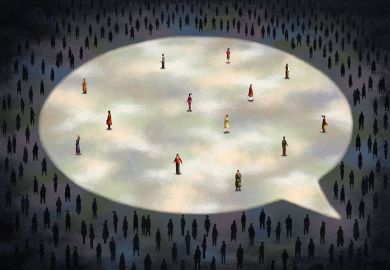As he sends her falling down the rabbit hole and has her wonder where in the antipodes she may emerge, in Australia or in New Zealand, little would Lewis Carroll have imagined that Alice's adventures would one day be adapted into Pitjantjatjara, an Australian aboriginal language, the white rabbit turned into an albino kangaroo, his waistcoat and his watch into a dilly-bag and a digging stick. Barbara Ker Wilson, in her notes to Nancy Sheppard's Alitjinya Ngura Tjukurmankuntjala ( Alice in Dreamland ), counts that Alice has been translated into 43 languages besides Pitjantjatjara. What makes Alice appeal so?
This Annotated Alice is the third to come from Martin Gardner, whose puzzle pages alone make Scientific American worth buying. With John Tenniel's now classic illustrations, like crisp and clear signposts, clamouring where you are into the story, you will likely catch yourselves leaving Alice and reading instead Gardner's annotations in the margin, turning back to Carroll's text only to discover what it is precisely in Alice that you had missed, and which called for this or that explanation. Gardner's marginal comments are, to say the least, abundant. The margin is enticingly wide, a chasm more than a margin, occupying almost half of every page, packed with much smaller print than the text of Alice itself. Even so, Gardner's annotations overflow the story of the Looking-Glass House, where lurks the Jabberwock, by a full five pages. Perhaps the few pages whose gaping margins remain blank will elicit from you a muted "oh" of disappointment, as they did from me.
Gardner, self-effacingly, is sparing of his own interpretations and generous of others'. Some, unwittingly, throw a sad-sweet light on how our world has changed since the days of Carroll, a time of customs and habits strangely distant from ours. Thus at the Mad Tea-Party, when Gardner comments upon the Hatter and the March Hare trying to stuff the poor Dormouse into a teapot: "I am indebted to Roger Green for the surprising information that Victorian children actually had dormice as pets, keeping them in old teapots filled with grass or hay," and when elsewhere he feels it necessary to explain what barley-sugar is.
Dormice in teapots, yes, but isn't explaining barley-sugar a bit excessive? Yet, the other day, at the supermarket, a check-out girl was waving a bag at her colleague on the other side: "Fiona! Hey, Fiona! What are these called?" These, showing through the transparent plastic, were chestnuts.
Gardner calls his third Annotated Alice the Definitive Edition . Is it because he doubts that he will live to write a fourth, or because he would prefer to leave to someone else the task of revealing the surprising information that 20th-century children used to keep small canines and felines as pets, instead of tamagochis?
Gardner often digresses into the most engrossing trivia, as fantastic and unexpected as Alice's adventures themselves. Thus again at the Mad Tea-Party, where he finds it advisable to explain to his American readers that treacle is British English for "molasses", on which occasion we are then treated to what "treacle wells" were - wells believed to contain water of medicinal value. We are told the 8th-century legend of the treacle well that existed in Binsey near Oxford in Carroll's time, and finally we learn of the "Treacle Bible", a Bible printed in 1568 in which Jeremiah (8:22) begins with: "Is there not treacle at Gilead?" instead of: "Is there no balm in Gilead?" Gardner's annotations paint a picture of a bygone world, gone the way of François Villon's snows of yesteryear, and this, along with the entertaining silliness of some commentators, is perhaps what makes his Annotated Alice appeal so. But what is it then that makes Carroll's Alice appeal, and to adult readers too? Gardner makes it quite clear, with ample documentary evidence, that Carroll wrote Alice not for grown-ups but for children, even more specifically, for the Liddell sisters.
Is it because Alice allows its adult readers to indulge their fantasies while retaining a deadly serious front, ponderously pontificating as to why, as told below, Alice will never reach 20 the way she recites her four-times table; or is it because Alice, or rather the dissection of Alice, provides us with a pretext to play childish games otherwise forbidden to self-respecting grown-ups; or is it simply our age-induced inability to penetrate anymore the oneiric world of childhood, hampered by our need to find rational explanations where none should be? In The Pool of Tears, Alice finds her identity and her sanity slipping away: "How queer everything is to-day!... I wonder if I've been changed in the night?... I'll try if I know all the things I used to know. Let me see: four times five is twelve, and four times six is thirteen, and four times seven is - oh dear! I shall never get to 20 at that rate!" Gardner comments: "The simplest explanation of why Alice will never get to 20 is this: the multiplication table traditionally stops with the twelves, so if you continue this nonsense progression... four times seven is 14, and so on - you end up with four times 12 (the highest she can go) is 19 - just one short of 20."
He gives another, alternative explanation, advanced by one A. L. Taylor:
"Four times five actually is 12 in a number system using a base of 18. Four times six is 13 in a number system with a base of 21. If we continue this progression, always increasing the base by three..."
But let us cut this folly short and hasten, for a shred of sanity, to Gardner's introduction to the first edition of his Annotated Alice , where he quoted at length Gilbert K. Chesterton writing in 1932: "Poor, poor, little Alice! She has not only been caught and made to do lessons, she has been forced to inflict lessons on others... There will be lots and lots of examination papers, with questions like: 1. What do you know of the following: mimsy, gimble, haddocks' eyes, treacle-wells, beautiful soup?...4. Distinguish between Tweedledum and Tweedledee."
And lots and lots of convoluted explanations why Alice will never get to 20 with her four-times table.
There is a much simpler explanation, however, one that will account for the whole of Alice to boot. If you have ever dreamt that you were reading a newspaper, and, seeing that nothing seemed to make sense, you have tried to concentrate on your reading, still in your dream, and just barely managing not to wake up, you may have seen how the letters on the page reluctantly shift to form words under your stare, like children herded into a classroom in orderly files, but will, as soon as your eyes move on, break out again in a ruckus. The harder you concentrate, the more frustrated your efforts become at coaxing this unruly print into a semblance of sense and discipline. The harder Alice tries to remember her multiplication table, the less progress she makes, the further the familiar table wriggles away, a slippery eel, a slithy tove. At that rate indeed, she will never reach 20, and it is doubtful that Francine Abeles, mentioned by Gardner, will be of much help, with her "Multiplication in changing bases: a note on Lewis Carroll", in Historia Mathematica , Vol.3, 1976, pp. 183-184. Had Chesterton lived 40 years longer and read this issue of Historia Mathematica ...
Can we adults ever learn to shed enough of our daily experience with the waking world for just long enough - an hour would do - in order to take this nightly business of dreaming seriously, on its own terms, those of the dreamtime, as in the traditional culture of Pitjantjatjara Alice? Yes, but only with great effort, wading through treacle. Even Nigel Watts, the author of Writing a Novel and Getting Published in the Teach Yourself series, confesses to shock: "Modern equivalents (of the ancient deus ex machina ) are the cavalry arriving, sundry accidents and diseases, or the heroine waking up to discover it was a dream. I can still remember the shocked disappointment of reading Alice's Adventures in Wonderland for the first time."
Unfair! That bespeaks prejudice against the dreamworld. Alice enters it very logically by falling asleep. Logically, she leaves it by waking up. How else could it be, what more do you want? Try to recall some of your dreams, free of Jungian explanations, of Freudian explications, and you may realise how faithful Carroll's Alice is to the irreality of the dreamworld. Compare the ditties in Alice with the originals that inspired them, as given by Gardner. Parallel Alice's "How doth the little crocodile - Improve his shining tail..." with its original by Isaac Watts, an English theologian of the late 17th century: "How doth the little busy bee - Improve each shining hour..."
The words have wriggled out, beyond the reach of Alice's orderly, waking mind, like her four-times table, like the unruly urchins of a printed page seen in dream. Most of the poems and ditties in Alice, writes Gardner, "are parodies of poems or popular songs that were well known to Carroll's readers", and so must have been immediately recognised by them. But most have now been forgotten, like the practice of keeping dormice in teapots as pets, so that much of what delighted Carroll's contemporaries is lost to us. Or would have been lost, if it were not for Gardner's Annotated Alice .
"Ka Alitjinya pakara watjanu, 'Awari tjukurmanangina, kutjupa kutjupa.' Munu uwankara tjakultjunangi kangkurungka." ("'Oh, I've had such a strange dream!', Alice said. And she began to tell her sister all the strange adventures she had been dreaming about.")
Jacques Guy was formerly in the department of linguistics, Australian National University.
The Annotated Alice: The Definitive Edition
Author - Lewis Carroll
ISBN - 0 393 04847 0
Publisher - Norton
Price - $29.95
Pages - 312
Translator - Original Illustration by John Tenniel



